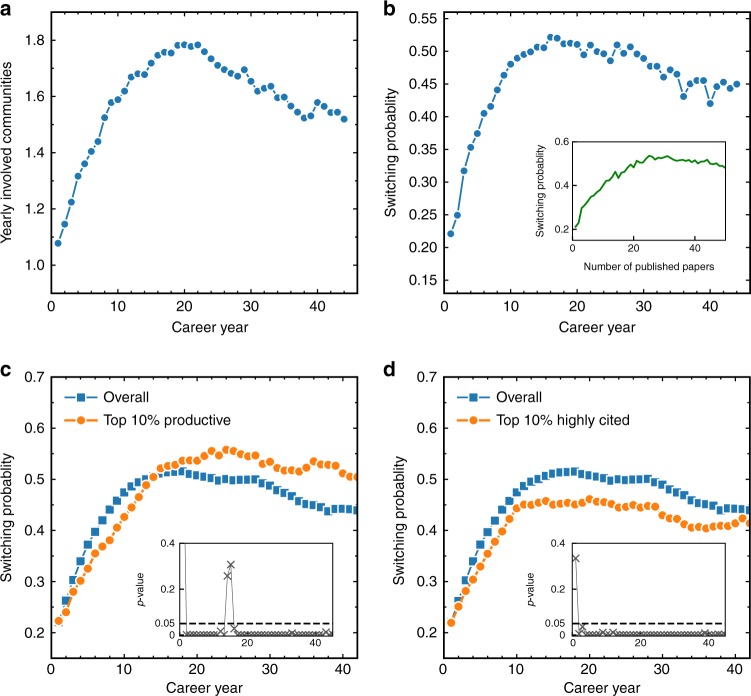Fig. 3.
Evolution of yearly involved communities and switching probability. a The mean number of yearly involved major communities for individual scientists in different career years. b The switching probability between two adjacent publications from one major community to another major community of scientists in different career years. The inset shows the switching probability as a function of the number of papers published in a career. c Comparison of the overall switching probability (all scientists) with the switching probability of the 10% most productive scientists in different career years. The results suggest that high productivity is associated with low switching probability in the early career, but with high switching probability in the later career. d Comparison of the overall switching probability (all scientists) with the switching probability of the 10% scientists who has the highest mean citation per paper. For each paper, we only consider the number of citations 10 years after its publication (c10)13. The results suggest that high average citation per paper in all career periods correlates with low switching probability. In the insets of (c, d), we present the p-value of the Kolmogorov–Smirnov test distinguishing between the two switching probability distributions in each career year

